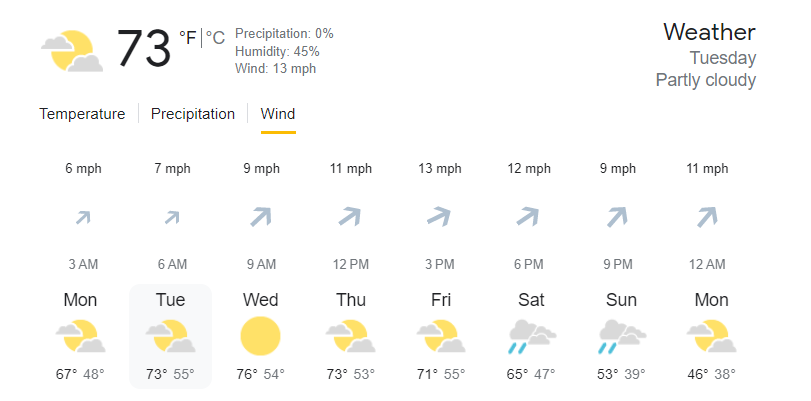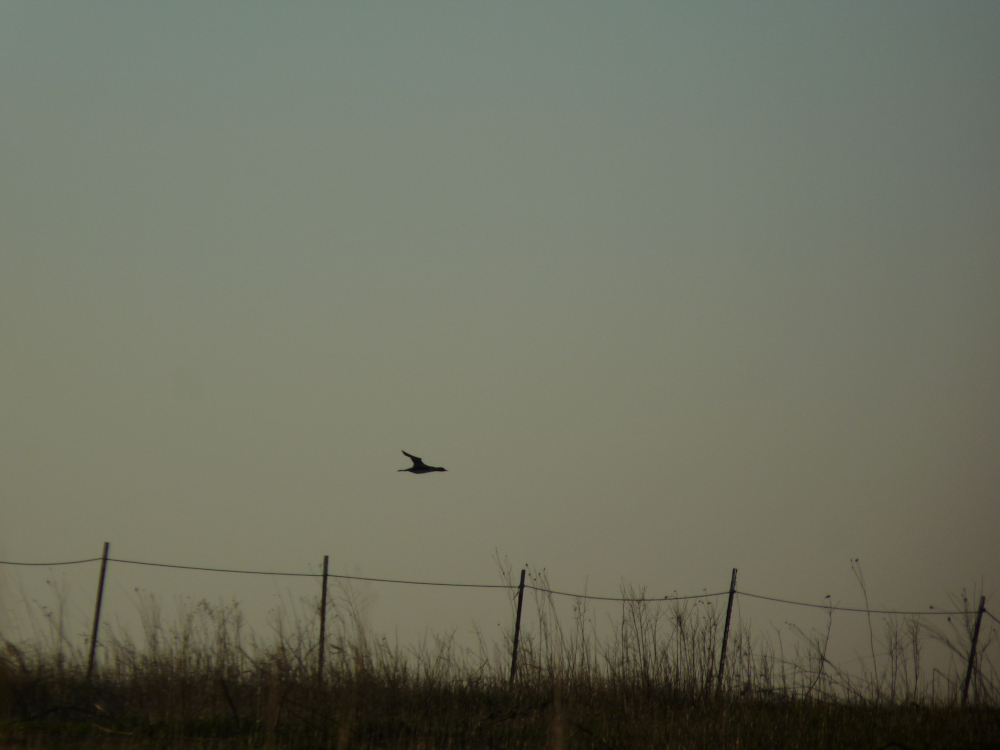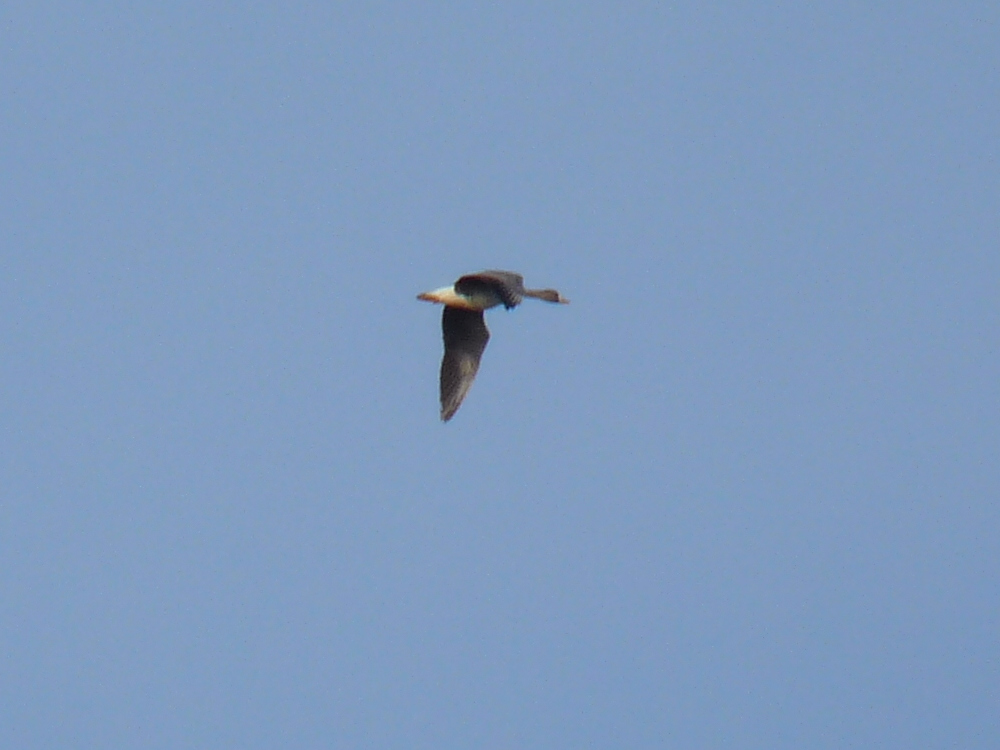One of the most distinctive sounds of spring at Montrose is the firing of fishing lines. Fishermen use fire extinguishers fitted with a pipe to propel their lines out into Lake Michigan. This setup functions like a canon, and the sound it makes is loud enough to startle you if you’re nearby. I’ve also noticed how close some waterbirds come to these fishing lines. I’ve seen Horned Grebes, Red-breasted Mergansers, and a Common Loon on one occasion swim right up to the lines. These birds may have been curious and looking for an easy meal. I can imagine a grebe or merganser getting tangled or grabbing the baited hook, which would be a mess for the fisherman and the bird. A tangled and thrashing Common Loon would be a worst case scenario. Loons are big enough and strong enough to do serious damage to a human trying to free them. They have sharp bills that can draw blood or poke out an eye. My guess is that fishermen would cut the line and lose their bait rather than try to free a struggling bird.
Birding and Weather Forecast, April 10 – 14, 2023
We’re in for an extended period of mild air and south winds starting Monday, April 10 and lasting the rest of the week. Tuesday through Friday look excellent. We should see an influx of typical mid spring migrants, including both kinglets, Eastern Phoebe, Yellow-rumped Warbler, and a variety of sparrows. LeConte’s and Henslow’s Sparrows are a good bet, and mid April is prime time for Smith’s Longspurs. If you have sick days you should think about cashing those chips in, or maybe find yourself conveniently sick a morning or two this week. As always, check the Montrose Point eBird Hotspot for recent sightings.
It’s The Little Things
When you visit Montrose, don’t be afraid to get involved to help make it a better place. Montrose is popular with fisherman, joggers, picnickers, photographers, and many others. As such, it gets more than its fair share of garbage, especially during the warmer months of the year. Disposing even a little of this waste goes a long way towards keeping Montrose beautiful. The Chicago Park District maintains garbage and recycling bins near the beach house for easy use. Another thing you can do is remove smaller tree branches from the walking paths in the sanctuary. These branches pose a tripping hazard to pedestrians and make negotiating the paths difficult for folks using wheelchairs and walkers. You don’t even have to bend over to remove them – just nudge them off the path with your foot. Remember, Montrose is ours. It belongs to us. Treat it like you would your own home.
Common Loon Time, Early April 2023
We’ve been seeing Common Loons at Montrose for over a week. They start to appear in late March and remain regular through late April. Early April is about peak season for them. Sometimes they show up in the harbor, where they’re easy to admire and photograph on the water. More often we see them in flight over Lake Michigan or over the Point and always at a breakneck clip. The best way to describe a Common Loon is a missile with wings – pointed at the front, with a fast, powerful, and direct flight, like they’re in a hurry to get where they’re going. They look lethal on the wing; if one slammed into you, you probably wouldn’t survive. Double-crested Cormorants are similar in size and shape but aren’t as sleek and look ungainly compared to a loon. The nice thing about spring Common Loons is that they’re usually in beautiful breeding plumage when they make it to Chicago. From a distance this isn’t obvious but up close the white striping against the black neck stands out.
If you visit Montrose in April, keep your head on a swivel and look up. A Common Loon may be flying over.
Greater White-fronted Goose, March 26, 2023
March is the month for waterfowl and one of the more uncommon waterfowl species at Montrose is Greater White-fronted Goose. We usually see them in early March or even late February if the weather is right. Sometimes large movements involving hundreds of birds occur, but a few dozen is more typical. For some reason, we saw only one White-fronted at Montrose in spring 2023, a flyover immature on March 26. This is a bit late but also a helpful reminder that birds don’t always behave like we expect them to. One interesting tidbit about White-fronted Geese is that hunters refer to them as specklebellies, an allusion to the prominent dark spotting and barring on the underparts of the adults.
No More Owl Photos
I’ve decided not to post any more owl photos online, including this blog, social media, and eBird. Doing so only encourages others to photograph and possibly disturb them, and maybe even tip people off about their location. I made this decision after watching how photographers behaved towards the Long-eared Owls that wintered at Montrose in 2022/2023. Once word of these birds got out, photographers set up just feet from where the Long-eareds were roosting. This caused the owls to move to another, more secluded area or leave altogether. I admit that I’ve been part of the problem by posting my owl photos on the internet, but I won’t do it anymore. We’re not just birders and photographers. We’re also conservationists, and a decent consideration of the welfare of these birds should take precedence over the attention we get from posting our photos on Facebook and other platforms. The internet is full of owl photos. It doesn’t need more.




